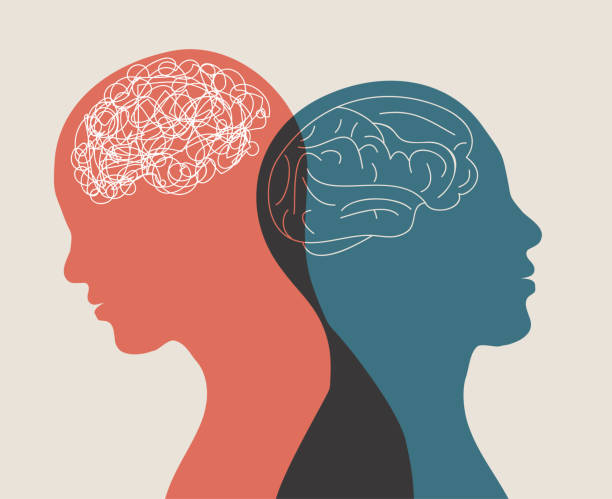Introduction
It’s your birthday. Notifications flood in. Your feed fills with “Happy Birthday!” messages. But… you’re not alive.
No, this isn’t a Black Mirror episode (though it could be). It’s reality: our digital identities, social media profiles, text threads, playlists, cloud-stored selfies, outlive us. Welcome to the eerie, fascinating world of digital immortality.
As of 2024, it’s estimated that by the end of the century, dead people will outnumber the living on Facebook (Heim, 2019). But what does this mean for our psyche, our relationships, and how we grieve?
Read More- Digital Amnesia
The Rise of the Digital Afterlife
A hundred years ago, grief looked like letters and gravestones. Today, it looks like birthday alerts from the dead and Spotify playlists from people we lost. Our online selves are like avatars—we curate them, filter them, and they often feel more “us” than real life.

Digital legacy includes:
- Social media accounts
- Emails, texts, and chat histories
- Videos and photos
- Cloud documents
- AI-generated avatars and chatbots (yes, really)
This phenomenon is no longer theoretical. Platforms like Facebook offer memorialization options for deceased users’ profiles. Startups like Replika and HereAfter AI allow people to train chatbots based on their personality and voice, letting family members talk to a “version” of them after death.
But does digital continuity offer comfort… or confusion?
The Psychology Behind Digital Grief
1. Continued Bonds Theory
Psychologist Dennis Klass proposed that we maintain ongoing emotional bonds with the dead, rather than simply “letting go” (Klass, Silverman & Nickman, 1996). The digital world supercharges this concept.
- Scrolling a late friend’s feed can be soothing—like visiting a digital grave.
- Many report that commenting on a deceased loved one’s post helps maintain a feeling of dialogue and connection (Brubaker, Hayes, & Dourish, 2013).
This digital “presence” can ease the grief process—especially in early stages. It offers a place to direct love, anger, confusion, and nostalgia.
2. Ambiguous Loss
But there’s a flip side.
Psychologist Pauline Boss coined the term ambiguous loss—grief that lacks closure (Boss, 1999). That’s exactly what happens when your loved one’s profile still posts birthday reminders. Or when a chatbot mimics their tone. You grieve—but they haven’t “disappeared.”
Psychological risks include:
- Delayed grief processing
- Distorted memory (e.g., idolizing or fossilizing the person digitally)
- Emotional looping, where you revisit the loss repeatedly without resolution (Walter, 2015)
The brain struggles to reconcile: “They’re dead… but I can still see and hear them.”
3. Digital Disinhibition and Grief Expression
Online mourning also gives people permission to express grief more openly, thanks to what psychologists call the online disinhibition effect (Suler, 2004). Without face-to-face judgment, mourners often:
- Share deeply personal posts
- Write “letters” to the deceased in public
- Engage in group grieving rituals (like hashtags, candle emojis, tribute videos)
In some ways, this democratizes grief, letting people process loss with community support rather than silence.
But it also creates performance pressure—where people feel compelled to post about someone’s death to prove their relationship or sorrow (Gibbs et al., 2015).
The Ethics of Virtual Resurrection
Imagine being able to text your deceased sibling—and have them “respond” in their tone and cadence. Sounds like comfort…or a horror story.
With advances in machine learning and voice synthesis, companies like StoryFile and HereAfter AI offer “conversational afterlife” services. Users pre-record stories, then family can interact with an AI version later.
But what are the psychological implications?
- Does it help closure, or encourage delusion?
- Can it extend grief artificially?
- Who owns your voice after death?
Scholars like Carl Öhman warn this could “erode boundaries between life and death, and redefine mourning” (Öhman & Floridi, 2017).
Identity, Legacy, and the Digital Soul
Your digital soul can outlive you… but who manages it?
In many countries, there’s no clear legislation about digital wills or posthumous data management. Families are often locked out of devices or unsure how to handle digital remnants.
Some services now offer “digital death planning”, letting users dictate:
- Which accounts should be deleted
- Who gets access to what
- What AI versions can or can’t do
Psychologically, this is empowering. It reframes death not as disappearance, but as a transition of narrative control.
Do We Become More “Us” or Less?
Curiously, many people feel the online version of a deceased loved one becomes idealized, a curated, Instagram-filtered echo.
- Posts remain static, unchanging—freezing people in their prime.
- Negative aspects fade, replaced by nostalgic affection.
But there’s a risk in reducing a complex person to a greatest-hits timeline. As scholar Tony Walter puts it:
“We risk converting people into digital saints, their lives tidied up into palatable memories.”
Living With (and After) Your Digital Self
Whether you find this hopeful, creepy, or a bit of both, here’s what to consider:
- Start a digital will – Decide who controls your digital presence after death.
- Practice mindful posting – What kind of “you” are you building online?
- Talk about digital grief – Share your experiences with digital legacies openly.
- Explore the tools – Try memorial features, archive chats, and explore chatbot ethics if that appeals.
Ultimately, digital immortality isn’t about cheating death. It’s about understanding how our minds adapt to a new kind of memory—one where presence and absence coexist.
References
Boss, P. (1999). Ambiguous Loss: Learning to Live with Unresolved Grief. Harvard University Press.
Brubaker, J. R., Hayes, G. R., & Dourish, P. (2013). Beyond the Grave: Facebook as a Site for the Expansion of Death and Mourning. The Information Society.
Gibbs, M. et al. (2015). #Funeral and Instagram: Death, social media, and platform vernacular. Information, Communication & Society.
Heim, B. (2019). Dead profiles: Managing the digital remains of the deceased on Facebook. Thanatos Journal.
Klass, D., Silverman, P. R., & Nickman, S. (1996). Continuing Bonds: New Understandings of Grief. Routledge.
Öhman, C., & Floridi, L. (2017). The political economy of death in the age of information: Digital afterlife. Minds and Machines.
Suler, J. (2004). The Online Disinhibition Effect. CyberPsychology & Behavior.
Walter, T. (2015). New mourners, old mourning: Online memorial culture in pandemic times. Omega Journal.
Subscribe to PsychUniverse
Get the latest updates and insights.
Join 3,030 other subscribers!
Niwlikar, B. A. (2025, June 29). Digital Immortality and 3 Insightful Psychological Concepts Behind It. PsychUniverse. https://psychuniverse.com/digital-immortality/



